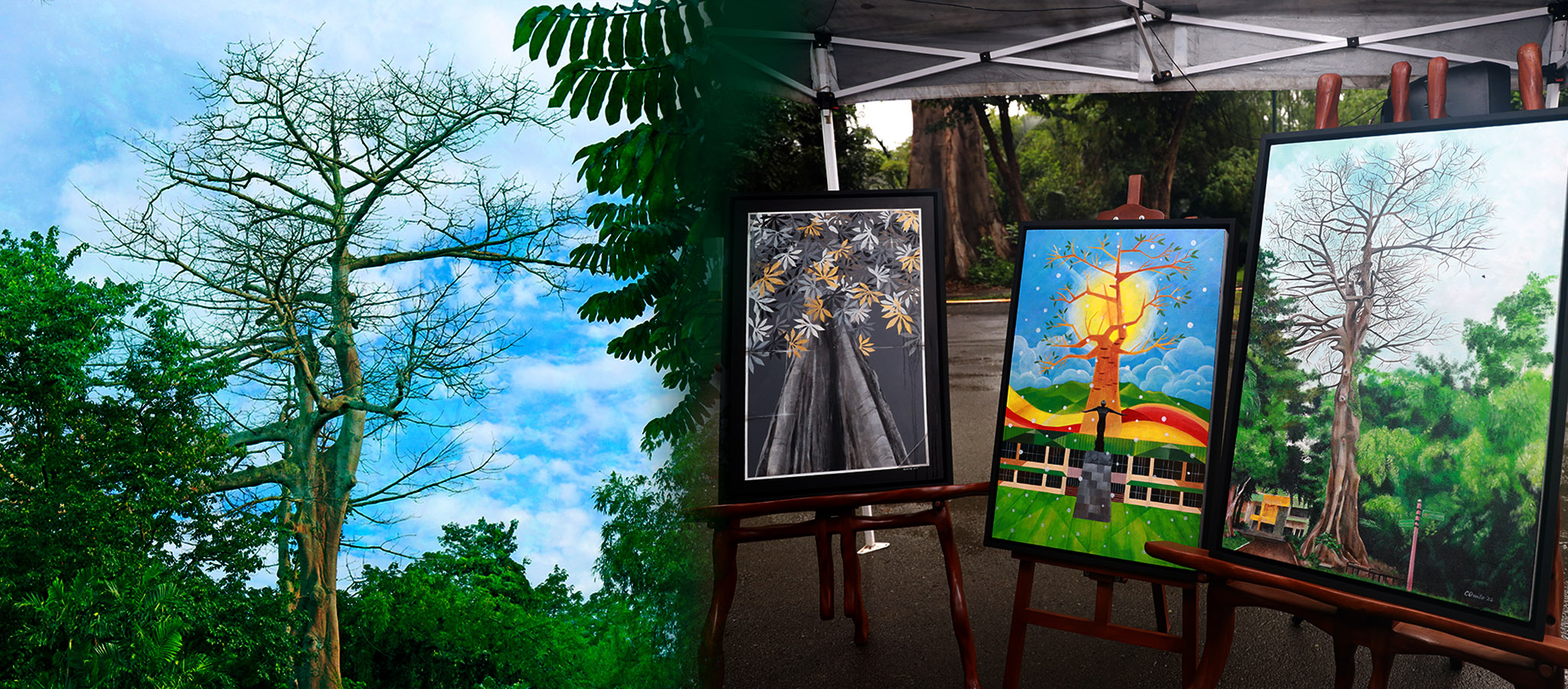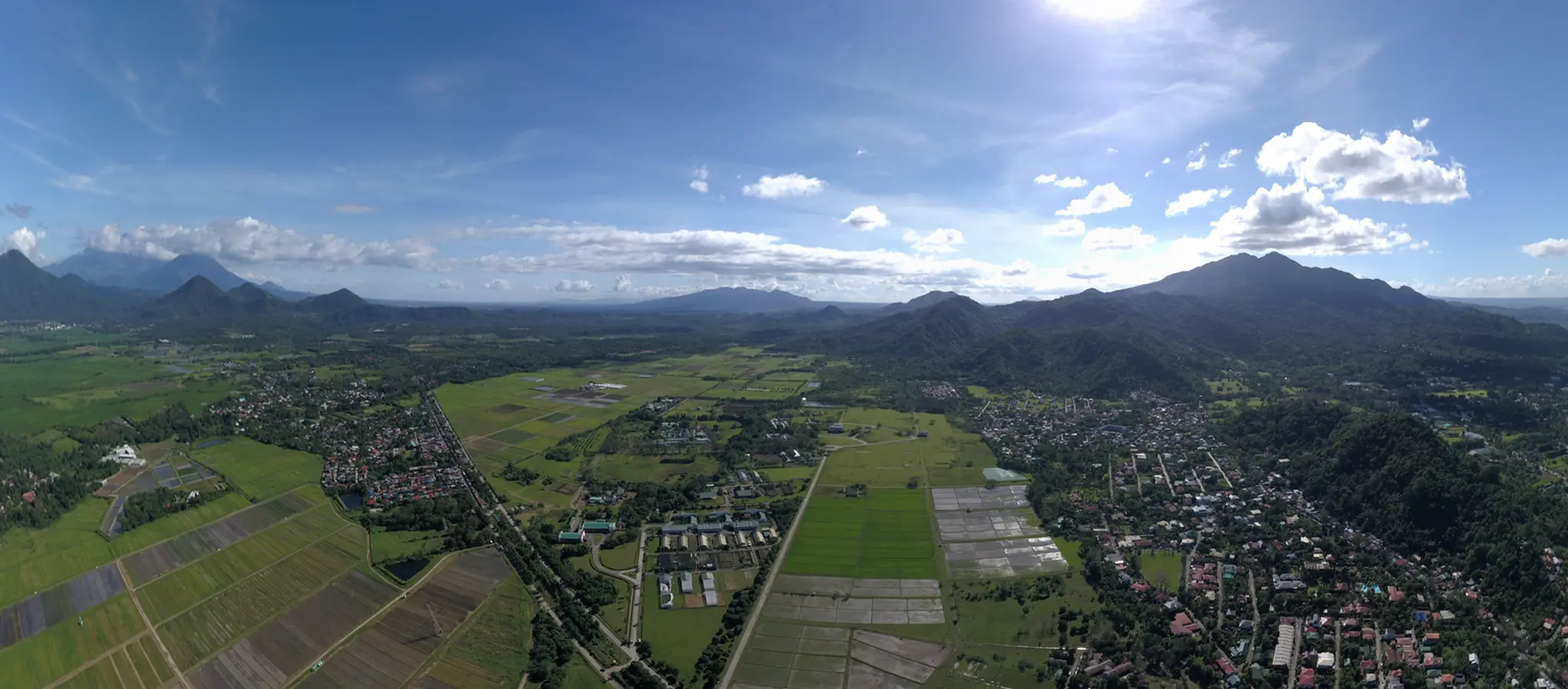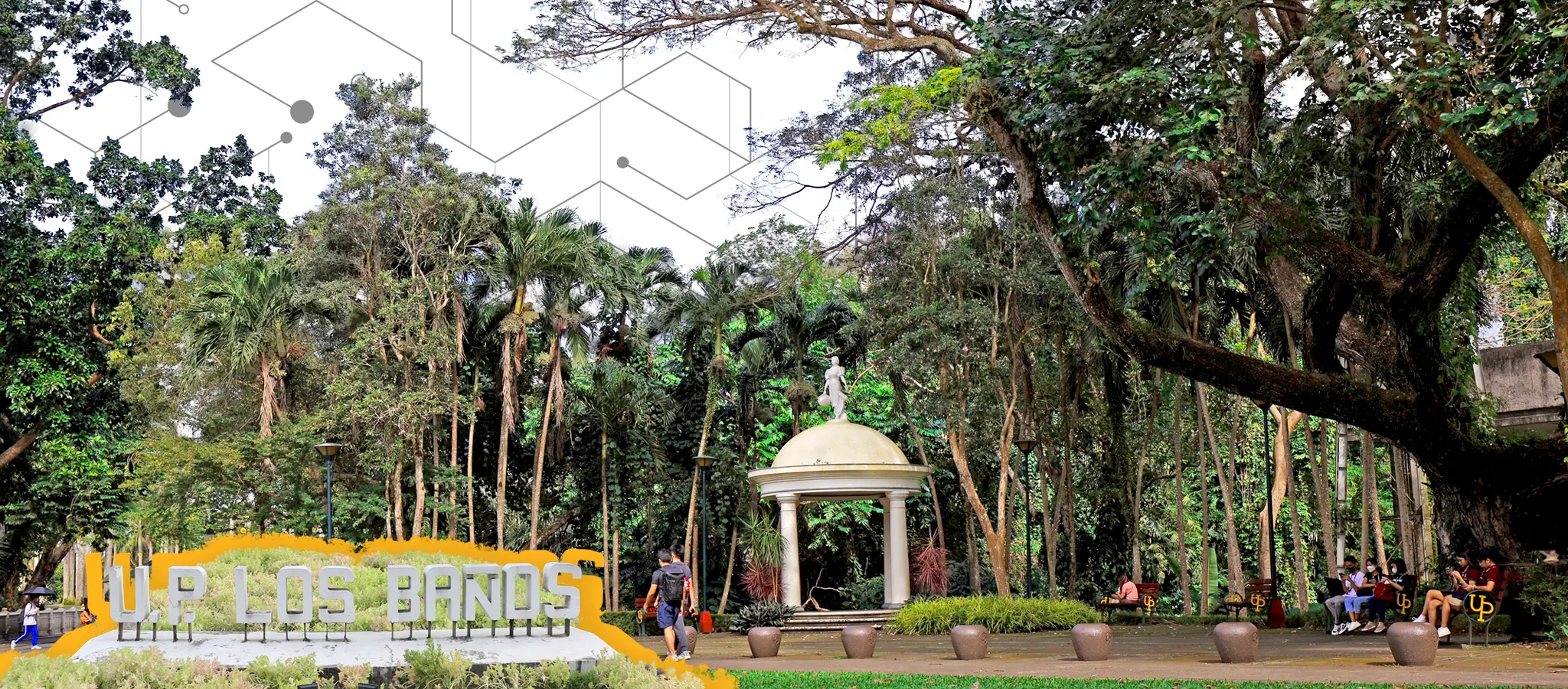
It’s a common thing to hold a tribute for someone who has passed, usually done by the loved ones left by the deceased. Even though, truth be told, it’s a way to comfort the living rather than merely remember the dead, it’s one of those meaningful traditions that gives us humans an opportunity to make sense of our inherently complex life. I’ve had my share of losses in the past and some of them I’ve opted to put into words—either written in the hope that the page bleeds instead of I, or to just have something to remind me of how natural death really is; that it happens, that’s life. While there’s no easy way to come to terms with sadness, a tribute somehow helps gather the broken pieces of the heart, allows it to mend itself using anecdotes, kind words, prayers, and the promise that another one awaits us all.
Offering a tribute for humans is a common practice done across cultures. To have one for a dead tree is quite rare.
In the lush campus of the University of the Philippines Los Baños (UPLB), there was an old kapok (Ceiba pentandra) that stood tall for a hundred or more years, a witness to decades after decades of change, historical wars, coming and going of students, and many events that made the university what it is today. It’s what causes “snow” during the summer when its white cotton flowers and pods scatter in the greens, filling the whole campus grounds. It signaled the nearing of the graduation day, the most awaited event in the life of any UPLB student. Sadly, on October 25, 2022, a tribute was held by the UPLB community—the death of the iconic tree has finally come. The kapok’s physical integrity had deteriorated due to natural causes which tree specialists and environment authorities deemed a hazard in the campus. After a century of overlooking the premises, the kapok has to be taken down.
Death of trees is as natural as death of humans, albeit trees are rarely celebrated. When I was younger, I didn’t have much appreciation of trees; for me then, they were all the same. Nonetheless, I thanked each of them, though only for their bounties. I remember specifically the humble rambutan tree (Nephelium lappaceum) that used to grow in our front yard which held a lot of memories of my childhood. Around summertime, the tree would color the yard bright red, bearing the hairy fruits that my grandmother would painstakingly pick using a makeshift bamboo with a catching net at one end. My cousins and I would be on the lookout for how many baskets we would fill before sundown. It was a yearly affair until, one summer, the tree failed to flower. We inferred it was due to a strong typhoon that passed months before the tree stood fruitless and green. We let it stay for a few more years—even long after my grandmother passed away—until it was time to cut it down to clear the space for other things. I grieved when my grandmother died. I remember wondering why I somehow grieved when the rambutan was gone.
In UPLB, I took a course on Landscape Horticulture under Dr. Susan Aquino-Ong, professor and landscape architect, from whom I’ve learned about the concept of “genus loci” or the sense of place. It is what gives entities in the environment values that are beyond their structural and ecological importance. For example, a waiting shed is not just a waiting shed, an organization’s tambayan is not just a concrete bench, or a living tree is not just a tree. When they hold memories, identities, culture, and history of certain groups of people, these things become something more meaningful than their utility. Learning about the concept of genus loci, I finally knew why I was saddened by losing the rambutan tree. Since then, I have appreciated trees more deeply and made an effort to shift my perspectives from seeing them only as shade and fruit providers to memory and culture bearers. In one of my graduate courses in Development Communication, I wrote a paper on the famous “Fertility Tree” for my Communication and Culture class under Dr. Pamela A. Custodio. The acacia (Samanea saman), specifically the one at Freedom Park, one of the rain trees in UPLB, was not just another acacia in the campus—rather, it is a cultural symbol of UPLB, rooted from all the cheeky stories and anecdotes that make up its existence.
Some people may wonder why a tribute was even held for the old kapok. Like the mentioned trees, the kapok provided a genus loci which played a role in the social and cultural environment of UPLB where it was seen valuable not only for the shade and snow-like fields it provided and created, but more importantly the identities and memories of the people who have seen it grow, live, and die. It reflected certain meanings, culture, and history of the campus. And like the rambutan that grew in our yard which held memories of my grandmother, it was not just a tree.
It was nice that the kapok was given a tribute. It comforted those who will miss the tall creature. It gave hope that another one could stand in its place to bear new memories in the next hundred years. I’m grateful for being part of a community that acknowledges trees as human equals: they have life, they are alive, and when they die, they deserve human’s respects. Although there’s one thing that sets them apart from us: trees outlive us all; thus, it’s a must that we make the most of our time with them.
—
Eileen Villegas is a writer, science communicator, and agriculturist. In her free time, she creates digital illustrations of Philippine native plants to promote their conservation.
Share this on:



